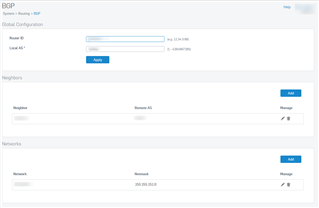Hello,
We have an XG unit that is BGP peering with a Cisco device. The XG unit is able to advertise routes properly to the Cisco unit as they are showing up on the Cisco and are then being advertised to the rest of the BGP peers but the XG unit is not receiving advertised routes FROM the Cisco.
We have done the following:
- Created firewall rule to allow all BGP traffic from all zones and networks to all zones and networks
- Created firewall rule to allow all traffic from Cisco router to Neighbor interface on the XG
- Deleted and recreated the BGP neighbor peering
We know that the Cisco units are peering properly because we have another Sophos UTM unit on the network and it is receiving the advertised networks from the XG unit and all the routes advertised from the UTM device show up on the Cisco. The XG just seems to refuse to accept the advertisements from the Cisco unit.
Any ideas?
This thread was automatically locked due to age.



